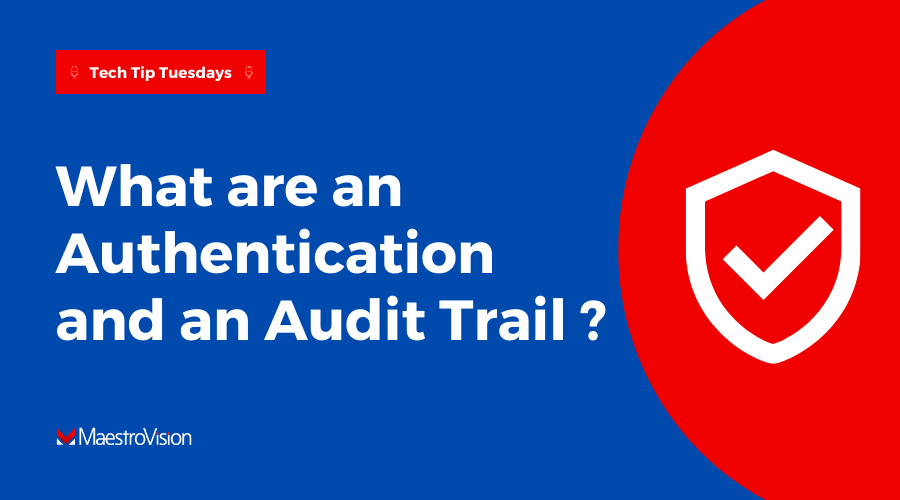Presenting Tech Tip Tuesday! Where broadcast experts answer your commonly asked A/V questions!
Do you have an A/V question you’d like us to answer? Send it to info@maestrovision.com and it just might be featured in a future video!
Question
What are Authentication and Audit Trails?
Answer
Authentication verifies user credentials, like passwords, smart cards, or biometrics to grant authorized access while employing safeguards against unauthorized access to ensure security and data integrity.
An audit trail, or log, keeps chronological records of system activities, documenting user actions, data changes, and access attempts.
The primary purposes for authentication and audit trails are the following:
Authentication: Identity Verification
Ensures that users are who they claim to be, which supports the prevention of unauthorized access and protects sensitive information.
Authentication: Access Control and Security
Safeguards data, systems, and resources from unauthorized access and security breaches by confirming user identity, which ensures proper access levels within a system.
Audit Trail: Accountability
Provides a means of attributing actions and activities to specific individuals, which increases accountability for their actions within an information system.
Audit Trail: Compliance and Governance
Helps organizations demonstrate compliance with regulatory requirements, industry standards, and internal policies by providing a record of activities and events.
Audit Trail: Problem Solving and Forensic Analysis
Assists with identifying issues, understanding the cause of events, and resolving problems. They’re crucial for forensic analysis which allows for better investigation of security incidents and detection of potential vulnerabilities.
Audit Trail: Monitoring and Detection
Allows organizations to monitor their systems to detect and respond to suspicious activities, anomalies, or policy violations in a timely manner.



